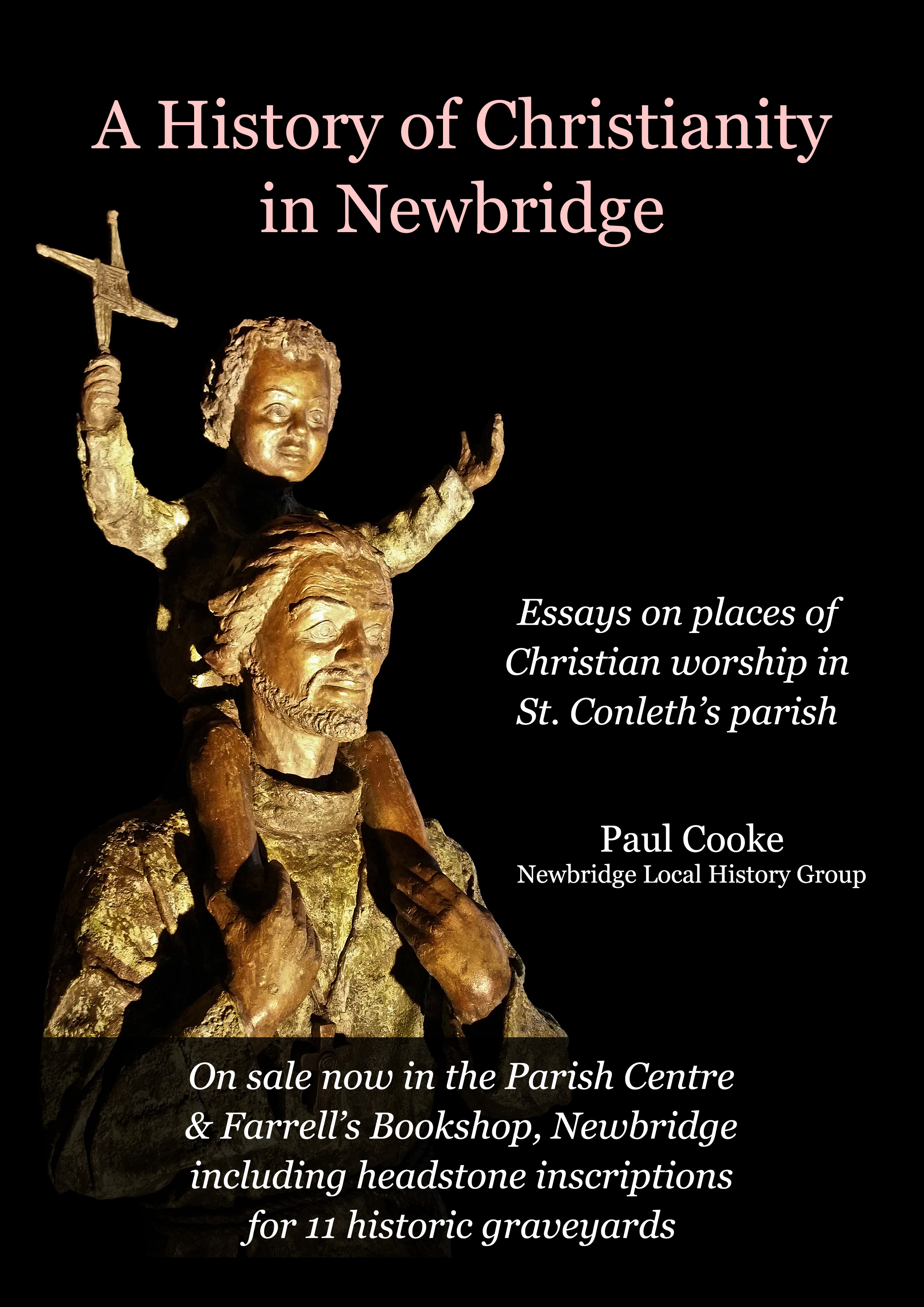Newbridge Primary Schools 1782-1870
PRIMARY SCHOOLS IN NEWBRIDGE: the beginnings.
The Relief Act of 1782 removed the ban on Catholic schools. Catholics could now open a school, teach in a school, as long as they took the Oath of Allegiance to the British monarch, got permission from the Protestant bishop of the diocese and taught only Catholic children. The British government established a number of commissions over the years to offer advice on the provision of education.
The 1824-27 Commission authorised every parish to send in details of every school in its area. Luckily, the returns for the diocese of Kildare and Leighlin have survived. In 1824 there were two Cathlolic schools in Newbridge.
Old Connell School opened in 1794. The schoolmaster, Thomas Morrissey, was appointed by the Parish Priest, Rev. Thomas Nowlan. Morrissey’s annual income was approx £20 and was paid by the parents of the pupils. So it was a ‘pay school’, which was quite common at this time. Average attendance in the summer time was about seventy pupils, twice as many as attended during the harsh winter months. Approximately 25% of the pupils were able to read.
The other school in the Parish was another ‘pay school’ and was run by Thomas and Ann Moore. This school catered for about half that of the Parish school.
There was a much greater attendance at Sunday school – not many could afford to send their children to the ‘pay schools’, and the Sunday school was all many of them could afford.
Then, in 1831, the national school system was established. A Board of Commissioners for National Education was set up to manage the state funds for education. But the teachers’ salaries, school furniture and school maintenance had to be funded locally. The Board of Commissioners would look after the ongoing costs to buildings and furnishings, and would also approve the local trustees to manage the schools. But many schools chose not to become tied too closely to the Commissioners, and sought greater control over their own premises.
1840, Parish Priest of Newbridge, Rev. Thomas Kavanagh decided to open a national school for boys and girls in the town. On 13 February, 1840, he applied to the Board of National Education for funds to build a school-house. A suitable site had been leased from Edward Odlum at an annual rent of £1.10.0 (there was a promise that it would become rent-free when the present lease ran out). £25 was the local contribution towards the building. Furnishings cost £54.16.0. Unlike the ‘pay schools’, Religion would be taught on one day during the week, but only if the parents agreed to their children attending. Five days a week and for six hours each day, the school programme would be ‘a Literary and Moral education including Reading, Writing, Grammar, Arithmetic, Geography and History’. There would be some 170 boys and 130 girls eligible to attend from the Parish.
While the local Protestant Rector opposed the establishment of the school (in keeping with the Church of Ireland stance in general), permission was granted for the building of a school house, consisting of two stories, 121ft high and 101ft high, with a classroom, 46ft x 20ft on each floor. It was estimated at £287 to build.
In August, 1840, the Board approved a change of site, as long as the lease was a goodly length of time. Eyre Powell leased the land, on what would soon be known as ‘the Railway Road’, to Bishop Healy and the local clergy for 99 years from 29 September 1840. The lease was dated 5 January 1841. During the course of the year, the contractor didn’t fulfil his terms of agreement and he was replaced by Francis Lennon, who was allowed until 1 January 1842 to complete his work. While the local contribution to the building amounted to £117, a grant of £150 was paid over by the Commission in May 1842.
January 1842 the Male and Female National Schools opened on ‘Railway Road’. The girls used the first floor from 24 January, and the boys started a week later on the ground floor. Each school started with one teacher each, Mary Anne Murphy in the Female National School and James Byrne in the Male National School. Byrne died in August 1842 and it took until October of the same year to find a suitable replacement, Michael Moore. At that stage there were 150 on the rolls.
Mary Anne Murphy, in her 50s, resigned in November 1842. It took until March 1843 to find a replacement for her and the Female National School had to close during this time. Mary Wall was appointed, and in time she married Michael Moore on 15 February 1847.
In 1862 the Female National School applied for an assistant teacher: there were 115 on the roll. Mary Moore already had two Monitors helping out, and one of them, Eliza Mullen, was appointed assistant teacher on a salary of £14. The other Monitor was Kate Moore, daughter of Michael and Mary Moore, the principals, and she was only thirteen years old.
Teachers were not well paid. While a labourer with steady work earned between £16 and £23 per annum, in the 1860s a male principal could earn £42 and a female principal £34 per annum. An assistant male teacher earned about £22 and a female assistant teacher got £19 per annum.
Sources:
Brennan, Rev. Martin, Schools of Kildare and Leighlin 1775-1835. (M.H. Gill and Son Ltd, 1935).
Inventory of Parish Property, St. Conleth’s Parish, Newbridge, Co. Kildare.
Public Records Office, Dublin: File ED 2/21, F. 49, F. 110.
File ED 1/43, F. 52, F. 92, F. 133.
File ED 2/147, F. 56.
Ryan, Maura, The Holy Family Sisters in Newbridge, 1875-2000. (September 2000).

